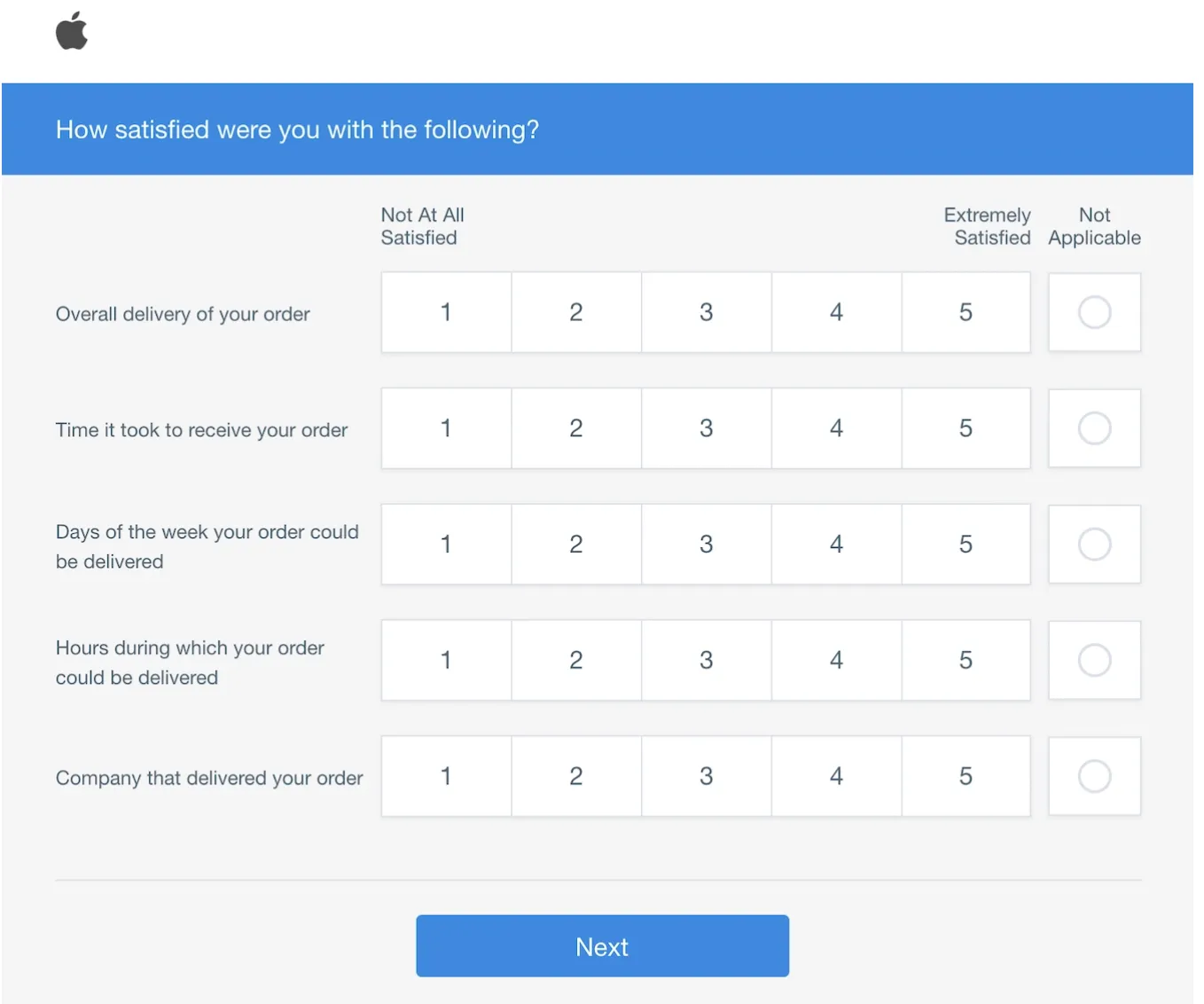How to gather more qualitative feedback?
You are an UX designer. It is quite difficult for you to gather feedback from your users whereas your company have obviously many customers. And you want to change this situation. This article is for you.
Ask directly to users what they feel
When you were studying UX, you learned the importance of conducting interviews to gather user feedback. So you learned different techniques for listening and numerous methods for synthsizing your work like personas, journey map, empathy map, etc. This is great!
But as you start your UX job, you now encounter difficulties in meeting these users:
Some people in your company don't want them to be bothered.
Some mention that it's too complicated to engage with them.
Others insist they've already spoken with them, so they don't permit you to do so.
Or you simply don’t find the time to meet them (which is questionnable).
The thing is you cannot always talk to your users. Even if you learn a lot about that. Even if you really want to. So how could you go further? Surveys with an open field.
Indeed, users can express themselves. You obviously do not have to design what they want, but without any idea of their needs and ideas, your are stuck.
Launch a NPS survey
One first approach to gather feedback is by soliciting reviews about the entire experience, to measure the overall perception of the customers. The Net Promoter Score (NPS) is particularly well-designed for this: it measures their loyalty. It implies they evaluate you across the entire brand.
To measure that, the goal is to ask a question with a response scale from 0 to 10. The question follows the template: “How likely are you to recommend us to a friend or colleague?”.
The percentage of promoters (rating of 9 to 10) is subtracted from the percentage of detractors (rating of 0 to 6), resulting in a metric ranging from -100 to 100. The last part of customers are called the passive ones (rating of 7 to 8).
From 1, loyalty to your business is average.
From 30, loyalty to your business becomes good.
From 50, loyalty is excellent.
+ 10 NPS points = + 3% upsell
There are 3 big advantages to begin with the NPS:
An increases of this indicator means more revenue.
It must be already done in your company, so data must be already here.
It allows you to asks for qualitative feedback with the follow-up question.
The Net Promoter Score is not just a metric for measuring customer loyalty, it has tangible implications for business growth. In the context of B2B companies, a 10-point increase in NPS carries significant weight. CustomerGauge's insights suggest that this uptick correlates with more than a 3% increase in upsell opportunities. This growth can be attributed to the enhanced loyalty that comes with a higher NPS.
On a different note, according to data from PwC about the customer satisfaction in 2021, more than 90% of companies actively collect customer feedback, particularlly through NPS studies. This practice is mainly managed by marketing and customer relationship services. As a UX person, it might be beneficial to connect with these teams to explore how such data can be shared with your service.
More than 90% of companies already collect customer feedback
To go deeper, it is important to add a follow-up question. This enables you to gain insights into a person’s reasoning for scoring you the way they did. These are example of good follow-up questions:
“Do you have any additional feedback for us?”
“What is the primary reason behind your score?”
“What should we improve?”
By doing that, you will be able to have data about the needs and questions of yours users. Through segmentation, you can create panels of individuals whom you can reach out to for further discussion, meaning more qualitative feedback!
Happiness scores tell you what is happening but never ever explain why.
Tomer Sharon, senior UX researcher
Finally, there are at least 2 different ways to solicit feedback. Genereally, marketing teams have a process in place to manage the NPS. This involves selecting a tool, configuring it to send the survey after a specific action (usually a few days after a purchase), and responding to individuals who provide feedback with tailored templates, increasing their involvement. There are numerous tools for this purpose, such as Hotjar, GetFeedback, or SurveySparrow.
If you want to start with your own resources, you can create a survey using platforms like Typeform, SurveyMonkey, or Google Forms. You have to find several email addresses within your company to send these customers a survey that you have crafted. In my consulting experience, I typically aimed for 50 responses from around 1000 emails.
Launch a CSAT survey
CSAT is short for Customer SATisfaction. The goal of a CSAT survey is to understand how people are satisfied about your product and services. It also aims to find actionnable feedback to improve them. However, to be able to find that, the rule is to be specific about what you are measuring: you have to frame the feature that you want to evaluate in order to have a specific enough feedback.
However, for these to be useful for making the product better, scores must be feature-specific. Measuring specific phenomena gives you the ability to focus efforts and save resources.
Tomer Sharon, senior UX researcher
A CSAT survey typically consists of one or several questions with a scale from 1 to 5. The main question follows the template: “Are you satisfied with… ?”. The most effective is to contextualize your question directly in your app with a in-app survey, like Hotjar, GetFeedback, or SurveySparrow. But you can also send an email with your survey, like presented before. The difference will be with the number of questions: because you lack context, you will need to be more precise about your questions, like in the following example.
This example shows you a CSAT survey. All the questions are about the order and they are quite specific.
To calculate a CSAT indicator, divide the number of satisfied customers by the total number and express it as a percentage:
0-40% is a poor CSAT
40-60% is okay
60-80% is a good CSAT
80-100% is excellent
CSAT surveys offer several advantages:
They are easy to execute
Everyone recognizes them (and many people don’t call them CSAT but 5-stars surveys)
They are not too demanding for respondents
You can also associate a follow-up question to gather more qualitative feedback
While CSAT scores provide valuable insights into customer satisfaction, the challenge lies in knowing what you're looking for. When you want to launch your CSAT survey:
Try to establish your assumptions about a specific feature and build your survey around that.
Or just ask the “Are you satisfied with… ?” question by putting this question at the right moment in your experience, if you don’t know what you’re looking for.
With that, you will be able to find lots of actionnable customer feedback!
Analyze your results from the verbatims
Having NPS and CSAT scores is beneficial, particularly for management. However, you probably want to go further, especially now that you have some feedback. Yet, you may lack the time or inclination to manually tag and analyze feedback at scale.
Before diving into the analysis of your results, the initial step is to identify the various verbatims, specific parts of the text that hold particular significance. Based on that, you can do different processing, like tagging them with a topic, in order to have an overall understanding of what people are talking about. There are several tools to do that by hand, like Notion or Excel or more specific ones like Dovetail or condens.
However, to accelerate this part, you can use AI-powered tools like Synopsis. It assists you in automatically identifying, rephrasing, and tagging verbatims.
Once you've pinpointed all the topics, you can construct comprehensive dashboards that allow you to comprehend the primary subjects discussed by your customers. It is particularly useful when you want to create your panels (”people who are talking about that”) to engage in discussions with them.
Example of the top 5 of topics for Carrefour France, between January 1st, 2020, and August 31st, 2023.
Example of the analysis of the topic Customer service for Carrefour France, between January 1st, 2020, and August 31st, 2023. A significant portion of the feedback revolves around the attitude of the personnel.
You can even delve deeper by analyzing cross-topics. The objective is to understand what people are discussing based on one primary topic.
Using an AI tool for feedback analysis enables you to focus your time on the relevance of your data collection rather than the manual treatment of the data. It empowers you by providing solid evidence based on something indisputable: customer feedback.
Call back your users
As presented before, once you identified the topics in your feedbacks and the segmentation of your customers (for example promoters, passives, detractors), you can create your panels. I could be something like this:
Detractors complaining about the subscription page
Promoters and passives talking about the video player features
Recent customers talking about the customer service
To understand any happiness number, you must invest in qualitative research. And no, an open-ended survey question does not count.
Tomer Sharon, senior UX researcher
With your panels, it's time to reach out to these individuals. If you have their contact information, you can deepen your engagement by reaching out through written communication or, even better, by giving them a call. Responding to their feedback demonstrates that you value their input, enhancing their connection with your brand. They've already shown a level of engagement by taking the time to provide feedback.
And voila! You've successfully gathered more qualitative feedback through an automated feedback collection method. You can now improve your empathy skills with real discussions with your customers!
When do you begin that?
About Synopsis
Synopsis is a software company that allows you to understand at a glance everything people say about you: customers, employees, detractors and promoters. It aims at a feedback-driven world, where every major decision is supported by feedback. To achieve this, it relies on generative AI, capable of digging into text and extracting particularly relevant elements drowned in the mass. In concrete terms, Synopsis is a solution that aggregates all your feedback and provides you with precise and activatable learning.
Sources
Key Experience Indicators: How to decide what to measure? - Tomer Sharon
NPS Impact on Revenue: Correlations & ROI - CustomerGauge blog
Leviers de la satisfaction client 2021 - PwC & AFRC
7 NPS Question Examples That Will Deliver Better Insights - Refiner blog



